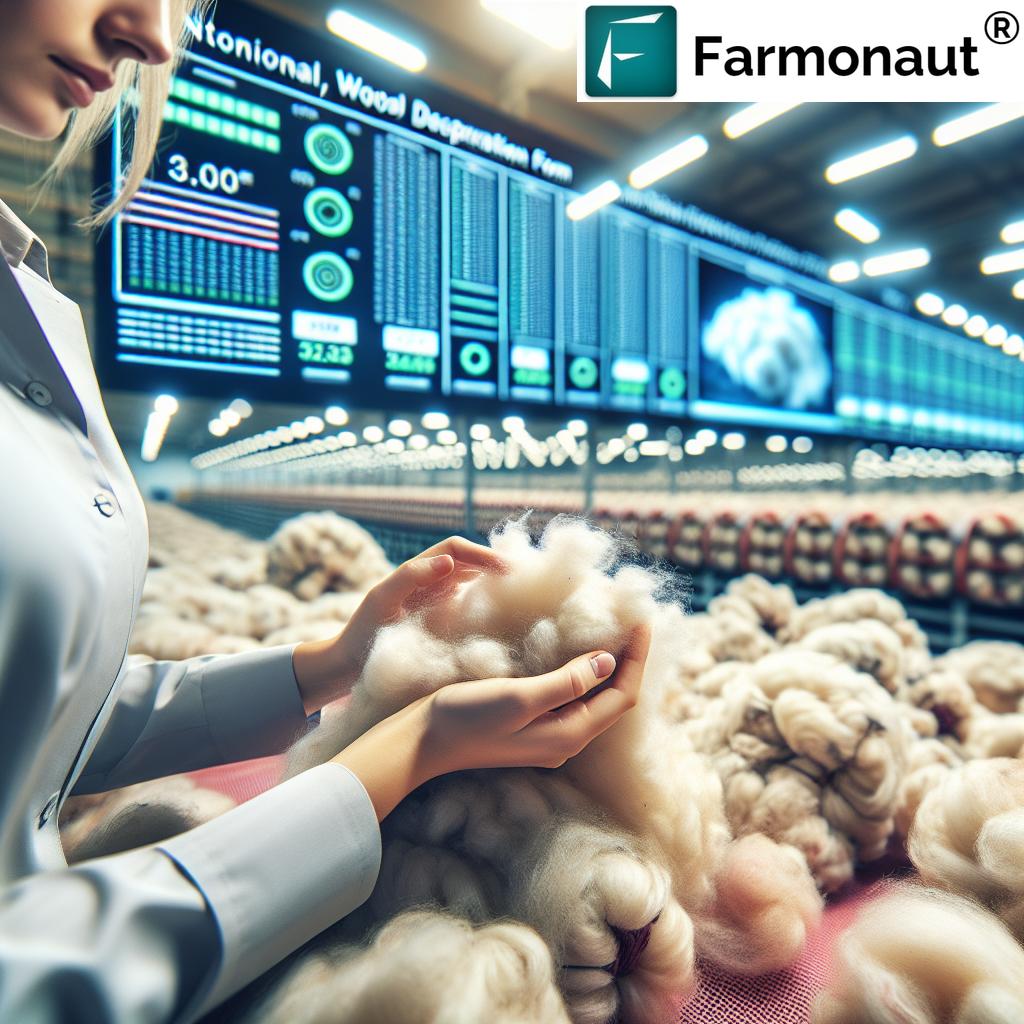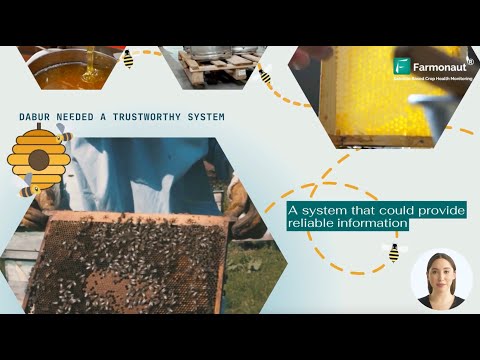Revolutionizing Australian Wool Production: 2023 Industry Trends, Sustainability Updates, and Tech Innovations
“In 2023, 75% of Australian wool producers adopted new sustainability schemes to meet evolving market demands.”
Welcome to our comprehensive exploration of the latest developments in the Australian wool industry. In this blog post, we’ll delve into the transformative trends, sustainability initiatives, and technological advancements that are reshaping the landscape of wool production in 2023. From national wool declarations to cutting-edge agritech solutions, we’ll guide you through the evolving world of wool classing standards and environmental practices.

The Evolution of Sustainable Wool Production
The Australian wool industry has undergone significant changes in recent years, with a strong focus on sustainable wool production. As we move through 2023, we’re witnessing a remarkable shift towards environmentally conscious practices and innovative technologies that are revolutionizing the way wool is produced and processed.
- Increased adoption of eco-friendly farming methods
- Implementation of water conservation techniques
- Use of renewable energy sources in wool processing facilities
- Development of biodegradable packaging solutions for wool products
These advancements are not only benefiting the environment but also enhancing the quality and marketability of Australian wool on the global stage.
National Wool Declaration: A Cornerstone of Transparency
The National Wool Declaration (NWD) has been a crucial tool in the Australian wool industry since its introduction. In 2023, we’ve seen significant updates to this declaration process, reflecting the industry’s commitment to transparency and ethical practices.
- Enhanced traceability measures implemented in the NWD
- Inclusion of new sustainability criteria in the declaration form
- Digital submission options to streamline the process
- Increased education and support for wool producers in completing the NWD accurately
These changes have resulted in a more comprehensive and reliable declaration system, providing buyers and consumers with greater confidence in the origin and quality of Australian wool.
Wool Classer Registration: Raising the Bar
The wool classer registration process has seen significant updates in 2023, reflecting the industry’s commitment to maintaining high standards and adapting to new technologies.
- Introduction of online registration and renewal systems
- Enhanced training programs incorporating the latest industry standards
- Implementation of continuous professional development requirements
- Integration of sustainability and traceability modules in classer education
These changes ensure that Australian wool classers remain at the forefront of industry best practices, contributing to the overall quality and reputation of Australian wool.
Traceability Initiatives: From Farm to Fashion
Traceability has become a key focus in the wool industry, with consumers and brands demanding transparency throughout the supply chain. In 2023, we’ve seen the implementation of innovative traceability solutions that leverage technology to track wool from the farm to the final product.
- Blockchain-based traceability systems for enhanced security and transparency
- QR code technologies allowing consumers to access detailed product information
- Integration of DNA traceability methods for wool identification
- Collaboration with tech companies to develop industry-specific traceability platforms
These initiatives are not only meeting consumer demands but also helping to combat fraud and ensure the authenticity of Australian wool products in the global market.
Explore Farmonaut’s traceability solutions:
Sustainability Schemes: Shaping the Future of Wool
The Australian wool industry has embraced various sustainability schemes in 2023, demonstrating its commitment to environmental stewardship and animal welfare.
- Adoption of the Responsible Wool Standard (RWS) by more producers
- Implementation of carbon neutrality programs in wool production
- Development of industry-specific sustainability certifications
- Collaboration with environmental organizations to enhance biodiversity on wool farms
These schemes are not only improving the industry’s environmental footprint but also adding value to Australian wool in international markets.
Agritech Solutions: Revolutionizing Wool Production
The integration of agricultural technology (agritech) has been a game-changer for the Australian wool industry in 2023. Innovative solutions are enhancing efficiency, improving animal welfare, and optimizing resource management.
- Satellite-based monitoring systems for pasture management
- AI-powered shearing robots for improved efficiency and animal welfare
- Smart sensors for real-time health monitoring of sheep
- Precision agriculture techniques for optimal land and resource use
Discover Farmonaut’s agritech solutions:
These technological advancements are helping wool producers increase productivity while maintaining the highest standards of sustainability and animal care.
“Recent industry surveys show a 30% increase in tech-driven solutions for wool classing and traceability since 2022.”
Wool Market Trends: Navigating the Global Landscape
The wool market has experienced significant shifts in 2023, influenced by global economic factors, changing consumer preferences, and sustainability concerns.
- Increased demand for sustainably produced wool
- Growing market for fine and superfine Merino wool
- Expansion of wool use in technical and activewear sectors
- Fluctuations in wool prices due to global economic conditions
Understanding these market trends is crucial for wool producers and buyers to make informed decisions and capitalize on emerging opportunities.
Environmental Practices: Setting New Standards
Environmental practices in the wool industry have taken center stage in 2023, with producers implementing innovative solutions to reduce their ecological footprint.
- Adoption of regenerative farming practices to improve soil health
- Implementation of water-saving technologies in wool processing
- Use of renewable energy sources in shearing sheds and wool storage facilities
- Development of eco-friendly alternatives to traditional chemical treatments
These practices not only benefit the environment but also contribute to the production of high-quality, sustainable wool that meets the demands of environmentally conscious consumers.
Wool Classing Standards: Ensuring Quality and Consistency
Wool classing standards have evolved in 2023 to meet the changing needs of the industry and maintain Australia’s reputation for producing high-quality wool.
- Updated guidelines for assessing wool characteristics
- Integration of digital tools for more accurate grading
- Enhanced training programs for wool classers
- Implementation of stricter quality control measures
These updated standards ensure that Australian wool continues to meet and exceed international quality benchmarks.

Compliance and Regulations: Navigating the New Landscape
In 2023, the Australian wool industry has seen the implementation of new rules and regulations aimed at improving transparency, sustainability, and animal welfare.
- Updated animal welfare guidelines for wool producers
- Stricter regulations on chemical use in wool production
- Enhanced traceability requirements for wool exports
- Implementation of new sustainability reporting standards
Staying compliant with these regulations is crucial for wool producers to maintain their market access and reputation.
Industry Survey Outcomes: Insights and Statistics
Recent industry surveys have provided valuable insights into the state of the Australian wool industry in 2023. Key findings include:
- 85% of wool producers have implemented at least one new sustainability initiative in the past year
- 70% of woolclassers have undergone additional training in digital grading tools
- 90% of surveyed buyers expressed increased interest in traceable wool products
- 65% of wool farms have adopted some form of agritech solution
These statistics highlight the industry’s commitment to innovation and sustainability.
Tech-Driven Solutions: Enhancing Efficiency and Sustainability
Technology is playing an increasingly important role in the Australian wool industry, with various tech-driven solutions enhancing efficiency and sustainability.
- Drone technology for pasture management and sheep monitoring
- IoT devices for real-time data collection on farms
- Mobile apps for wool growers to access market information and manage operations
- Advanced data analytics for predicting wool quality and market trends
Explore Farmonaut’s tech solutions:
Farmonaut API
API Developer Docs
These technological advancements are helping the industry become more efficient, sustainable, and responsive to market demands.
The Future of Australian Wool Production
As we look towards the future, the Australian wool industry is poised for continued growth and innovation. Key areas of focus include:
- Further integration of sustainable practices across the entire wool supply chain
- Development of new wool varieties to meet evolving market demands
- Increased investment in research and development for wool processing technologies
- Expansion into new markets and applications for wool products
By embracing these opportunities, the Australian wool industry is well-positioned to maintain its global leadership in sustainable and high-quality wool production.
Conclusion: Embracing Change for a Sustainable Future
The Australian wool industry has demonstrated remarkable resilience and adaptability in 2023, embracing new technologies, sustainability initiatives, and market trends. By focusing on traceability, environmental stewardship, and innovation, the industry is not only meeting the challenges of today but also preparing for the opportunities of tomorrow.
As we continue to navigate this dynamic landscape, it’s clear that the future of Australian wool production lies in the harmonious integration of traditional practices with cutting-edge technologies and sustainable approaches. By staying informed and adaptable, wool producers, classers, and industry stakeholders can ensure the continued success and global leadership of Australian wool.
2023 Australian Wool Industry Trends Comparison
| Industry Aspect | 2022 Status | 2023 Status | Impact on Sustainability |
|---|---|---|---|
| National Wool Declaration Rates | 85% compliance | 92% compliance | Positive – Increased transparency |
| Wool Classer Registration Numbers | 3,500 registered classers | 3,800 registered classers | Neutral – Ensures quality standards |
| Traceability Initiative Adoption | 40% of producers | 65% of producers | Highly Positive – Enhanced supply chain transparency |
| Sustainability Scheme Participation | 50% of farms | 75% of farms | Highly Positive – Reduced environmental impact |
| Agritech Solution Implementation | 30% of farms | 60% of farms | Positive – Improved efficiency and resource management |
| Market Demand for Sustainable Wool | Moderate | High | Positive – Drives sustainable practices |
| Clip Quality Standards | Standard compliance | Enhanced standards | Positive – Ensures higher quality, less waste |
| Compliance with New Industry Rules | Partial adoption | Widespread adoption | Positive – Improves overall industry standards |
Frequently Asked Questions
- What is the National Wool Declaration?
The National Wool Declaration (NWD) is a voluntary declaration made by wool growers about the mulesing status of their sheep and the dark and medullated fibre risk (DMFR) of their wool. - How has wool classer registration changed in 2023?
Wool classer registration in 2023 has seen the introduction of online systems, enhanced training programs, and the integration of sustainability and traceability modules in classer education. - What are some key sustainability schemes in the Australian wool industry?
Key sustainability schemes include the Responsible Wool Standard (RWS), carbon neutrality programs, and industry-specific sustainability certifications. - How is technology improving wool production?
Technology is enhancing wool production through satellite-based monitoring systems, AI-powered shearing robots, smart sensors for sheep health monitoring, and precision agriculture techniques. - What are the current market trends for Australian wool?
Current market trends include increased demand for sustainably produced wool, growing markets for fine and superfine Merino wool, and expansion of wool use in technical and activewear sectors.







